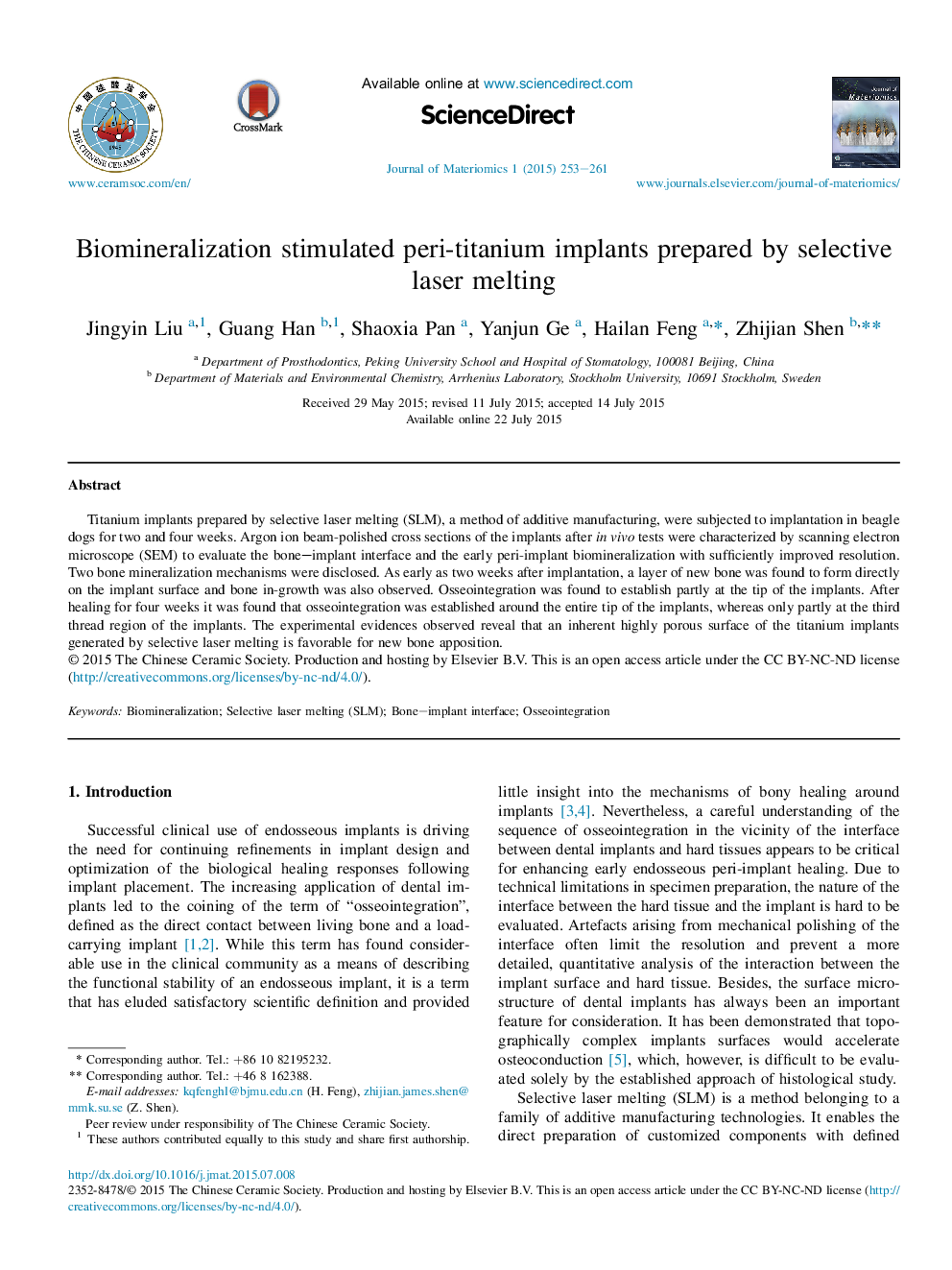| کد مقاله | کد نشریه | سال انتشار | مقاله انگلیسی | نسخه تمام متن |
|---|---|---|---|---|
| 1515167 | 994537 | 2015 | 9 صفحه PDF | دانلود رایگان |
Titanium implants prepared by selective laser melting (SLM), a method of additive manufacturing, were subjected to implantation in beagle dogs for two and four weeks. Argon ion beam-polished cross sections of the implants after in vivo tests were characterized by scanning electron microscope (SEM) to evaluate the bone–implant interface and the early peri-implant biomineralization with sufficiently improved resolution. Two bone mineralization mechanisms were disclosed. As early as two weeks after implantation, a layer of new bone was found to form directly on the implant surface and bone in-growth was also observed. Osseointegration was found to establish partly at the tip of the implants. After healing for four weeks it was found that osseointegration was established around the entire tip of the implants, whereas only partly at the third thread region of the implants. The experimental evidences observed reveal that an inherent highly porous surface of the titanium implants generated by selective laser melting is favorable for new bone apposition.
We used selective laser melting implants in the in vivo tests for two and four weeks. Two bone mineralization mechanisms: contact osteogenesis and distance osteogenesis were verified clearly by SEM investigation on argon ion beam polished cross sections. Bone–implant interface at different position and its time dependent evolution were disclosed. The highly complex microstructure of the surface of SLM implants enabled the harvesting of fresh bone scraps into the surface pores.Figure optionsDownload as PowerPoint slide
Journal: Journal of Materiomics - Volume 1, Issue 3, September 2015, Pages 253–261
